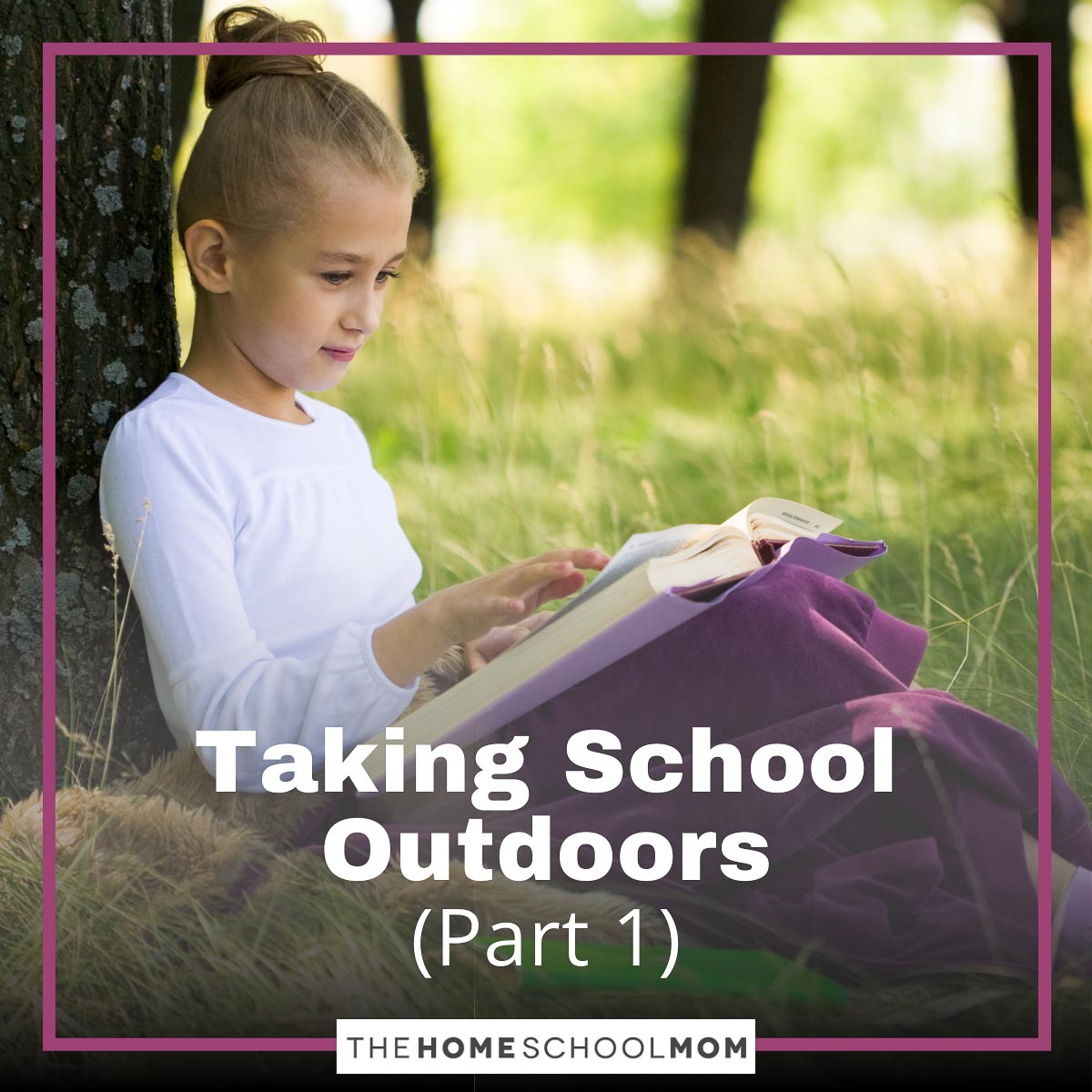As the weather warms with spring, mothers everywhere begin singing praises that their children can finally go outside again!

After months of being cloistered inside with books and projects, the warmth and sunshine of May brings yet another enjoyable aspect of homeschooling – doing school outdoors!
While there’s no doubt that the kitchen table has its merits in the homeschool, taking studies out into the open can bring a world of creative options and invigorated spirits. But not only that, getting kids into the sunshine is good for their health as well.
Consider this: An adequate amount of Vitamin D, which can be provided by exposure to sunlight, has been associated with reductions in cancer and diabetes[1], and with a reduced risk of multiple sclerosis[2], as well as a host of other health benefits. Good for your mood, good for your studies, good for your health – so shake things up a bit and take your studies outside, with some of these ideas:
- Put out a blanket on the grass and do your regular curriculum lying down in the sunshine instead of sitting at the table. Simply being outside can improve focus and inspire interest. Professor Mom, a homeschool blog, reviews research by the University of Illinois, which indicates that being in nature improves children’s attention span.
- Blow some bubbles outside—check out these bubble activities that combine fun and learning!
- Take a nature walk and have children keep a nature notebook in which they write about and draw what they observe. Nature-based learning is offer stimulation for the mind and the senses. Read about a nature walk from one homeschool blogger who uses the Charlotte Mason approach.
- Practice photography. Spring is the perfect time to pull out the camera and do a unit on photography. Homeschooling-ideas.com offers a variety of photography projects for kids. Check out these tips for getting kids starting with photography.
- Plant a garden. Incorporate teaching around the components of soil, plant reproduction and growth, and other science-related themes. As children cultivate and harvest a garden, they learn the source of food, and also gain valuable skills for future sustenance.
- Check out local homeschool co-ops, churches, or groups (such as 4-H) for outdoor camps that teach special skills or hobbies. These can include day camps as well as overnight camps, which involve children in everything from learning about nature to art.
- Read a History lesson while children swing on the swingset. The movement can help children (especially those with focus challenges) to better pay attention to what is being read.
- Go through the yard and identify the trees there. Use field guides to help children identify the different types of trees, including their bark, leaves, seeds, buds and more.
- Begin a nature collection. Find butterflies, insects, rocks, leaves, flowers, or other natural phenomena. Kids can put these items in a box, or even a whole cabinet, if you’re adventurous! Have children identify each item, learn about it, and label it. Try using pieces of their collection to make a seasonal table.
No matter what you do outside, or how you do it, taking advantage of the great outdoors will infuse life and energy into your homeschool.
Read Taking School Outdoors, Part 2
[1]http://www.sciencedaily.com/releases/2010/07/100715172042.htm
[2]http://www.www.sciencedaily.com/releases/2011/02/110207165422.htm




 Rebecca Capuano holds a Master of Social Work degree from East Carolina University and is the stay-at-home mom of three children (one of whom is in heaven). She also makes attempts at being a homeschooler, writer, photographer, scrapbooker, and truth-seeker. She has worked in a variety of capacities (including group homes, day treatment centers, and public schools) with at-risk children and staff, including developing a therapeutic and educational day treatment center for delinquent youth in Wilmington, North Carolina. She currently resides in Virginia. Rebecca believes that family is created by God as the most fundamental institution in society, and she is dedicated to helping families nurture their children to become responsible persons of character and integrity.
Rebecca Capuano holds a Master of Social Work degree from East Carolina University and is the stay-at-home mom of three children (one of whom is in heaven). She also makes attempts at being a homeschooler, writer, photographer, scrapbooker, and truth-seeker. She has worked in a variety of capacities (including group homes, day treatment centers, and public schools) with at-risk children and staff, including developing a therapeutic and educational day treatment center for delinquent youth in Wilmington, North Carolina. She currently resides in Virginia. Rebecca believes that family is created by God as the most fundamental institution in society, and she is dedicated to helping families nurture their children to become responsible persons of character and integrity.
Great ideas! I agree that something as simple as doing schoolwork outdoors can make a huge difference. Thanks for all the wonderful links, too! 🙂